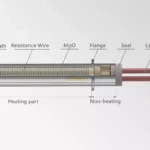In West Michigan, where the weather can change in the blink of an eye, being prepared for severe weather conditions is not just advisable—it’s essential. From the icy grips of winter blizzards to the sudden onslaught of springtime tornadoes, residents face a range of weather extremes that can threaten both safety and property. This reality makes it crucial for homeowners in the region to take proactive steps to safeguard their homes.
Understanding the specific challenges posed by West Michigan’s climate can be the key to effective preparation. By taking a holistic approach to severe weather preparation—from reinforcing structural integrity to ensuring timely information access—you can significantly enhance your home’s resilience. Let’s explore the essential steps every homeowner should consider to protect their dwelling from the unpredictable yet inevitable severe weather.
Understanding Your Regional Weather Risks
Every region has its unique weather threats. Coastal areas might brace for hurricanes, while the Midwest often faces tornadoes. The first step in protecting your home is to know what kinds of severe weather you might encounter. Check local government or meteorological websites to understand your area’s climate trends. This information is pivotal in making informed decisions about the kind of protection your home needs.
Reinforcing Windows and Doors
Windows and doors are the first line of defense against severe weather and are often the most vulnerable. High winds can shatter windows, and flying debris can cause significant damage. Consider installing impact-resistant windows and doors that can withstand harsh conditions. You can ensure your home is ready to withstand any storm by contacting companies like All Weather Seal of West MI which specializes in weatherproofing and exterior enhancements and provides crucial services for residents of West Michigan.
However, if professional installations aren’t currently within your budget, there are temporary solutions like storm shutters or high-strength window film that can also offer a degree of protection.
Roofing Solutions to Withstand Severe Weather
Your roof is crucial in protecting your home from severe weather. A damaged or weak roof can lead to significant problems, such as water leaks and structural damage. It’s advisable to inspect your roof regularly for any signs of wear and tear and consider materials that are known for their durability and resistance to severe weather. For example, metal roofing or high-quality shingles designed specifically for high wind resistance can be excellent choices. Upgrading your roof might seem like a significant investment, but it pays dividends by reducing the risk of costly storm damage.
Maintaining and Clearing Gutters and Drainage Systems
Effective water management starts with clean gutters and drainage systems. When gutters clog, water overflows and can damage your home’s foundation, basement, and walls. Before the storm season kicks in, ensure your gutters are free from debris like leaves and twigs. Install guards to keep debris out and ensure water flows freely away from your home. This simple maintenance task, often overlooked, can prevent many weather-related issues and save you from future repair expenses.
Landscaping to Minimize Weather Damage
Landscaping isn’t just about beautifying your space; it’s also a strategic defense against severe weather. Smart landscaping can help shield your home from damaging winds and reduce flooding. Plant trees and shrubs that can serve as windbreaks on your property, especially on the windward side. However, it’s crucial to choose strong, native plants that are adaptable to local weather conditions and are less likely to be uprooted. Additionally, consider the placement of trees to avoid potential damage to your home or utility lines should they fall.
Creating a Safe Room in Your Home
In extreme weather conditions, a safe room can be a lifesaver. This is a fortified area within your home designed to meet the Federal Emergency Management Agency criteria for protecting against extreme weather events. Whether you’re retrofitting an existing room or constructing a new one, it’s crucial to ensure it is adequately reinforced and well-stocked with essential supplies. Your safe room should have easy access to emergency kits, water, non-perishable foods, and critical medications. Although the initial cost of creating a safe room might seem high, remember that various federal and state programs may offer financial assistance to help offset the expenses.
Emergency Preparedness Kits
When severe weather hits, having an emergency preparedness kit can make a significant difference. Your kit should include basic supplies like water, food, flashlights, batteries, a first aid kit, and essential documents. Tailor your kit to your family’s specific needs, including items for pets, children, or elderly family members. Regularly check and update your kit to ensure all items are functional and within their expiry dates. Storing your kit in an accessible location is also crucial so you can quickly grab it in an emergency.
Staying Informed Through Technology
Technology can be a powerful tool in staying safe during severe weather. Invest in a good quality weather radio or download apps that provide real-time weather alerts and updates. This will help you stay ahead of the storm, giving you enough time to execute your preparedness plans or evacuate if necessary. Leveraging technology not only keeps you informed but can also guide you on when it’s safe to return home and start the recovery process if you’ve evacuated.
Additionally, consider setting up customized alerts for your specific area. Many modern weather applications allow users to tailor notifications to their exact location, enhancing the relevance and timeliness of the information received. Social media platforms and local news apps also serve as vital resources, offering updates and live reporting on weather conditions.
Conclusion
Protecting your home from severe weather is an ongoing process. It begins with understanding the risks of preparing your home structurally and extends to maintaining readiness through landscaping, emergency kits, and staying informed. Regular maintenance checks, especially before storm seasons, are crucial in ensuring that your home remains a safe haven. As weather patterns continue to evolve, so should your preparedness strategies. Stay updated on new technologies and improvements in home safety to keep your defenses robust and effective. By taking proactive steps today, you can minimize the impact of severe weather tomorrow, ensuring that your home stands strong against the elements.







